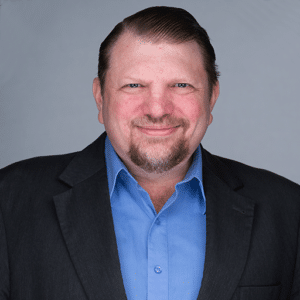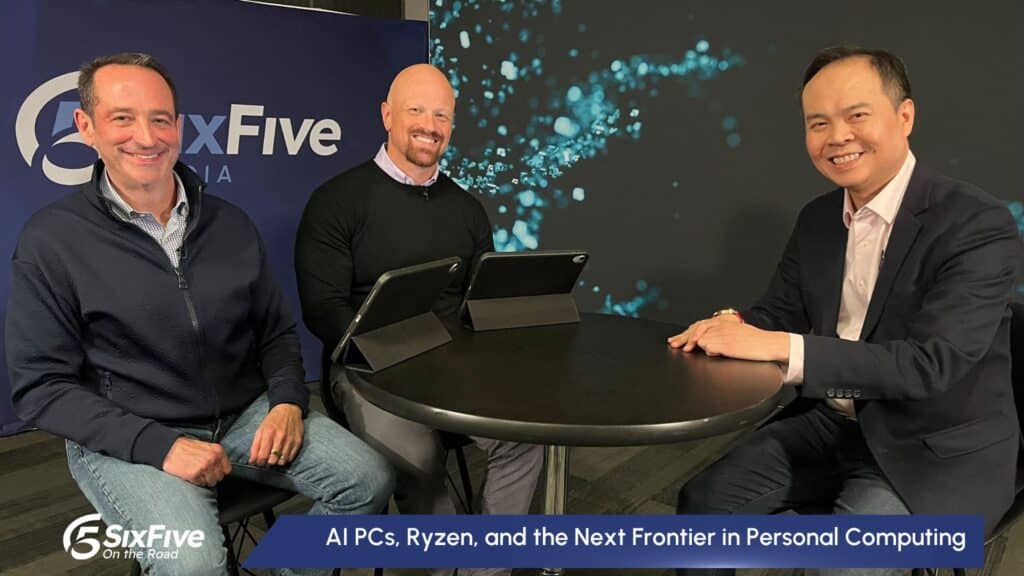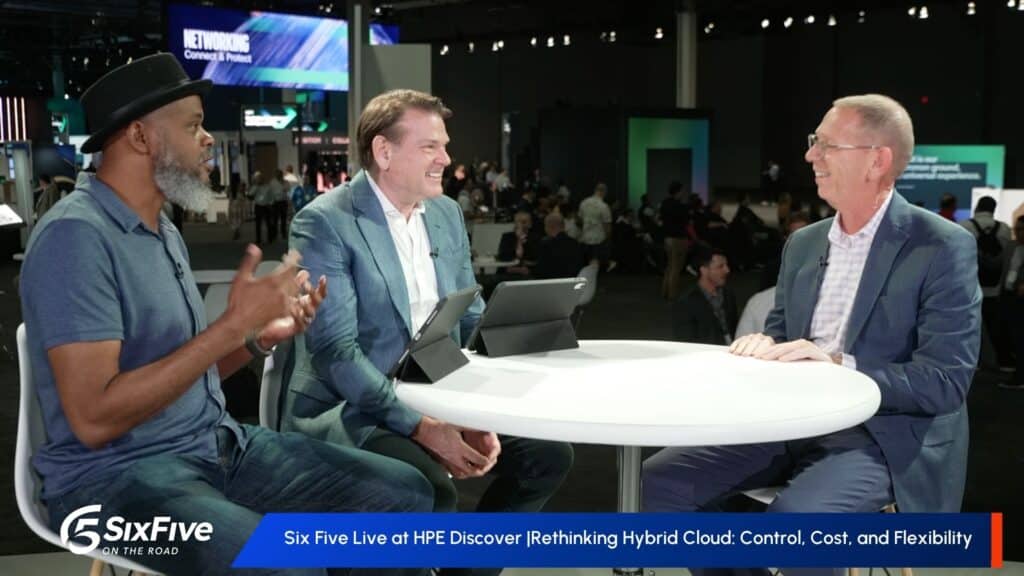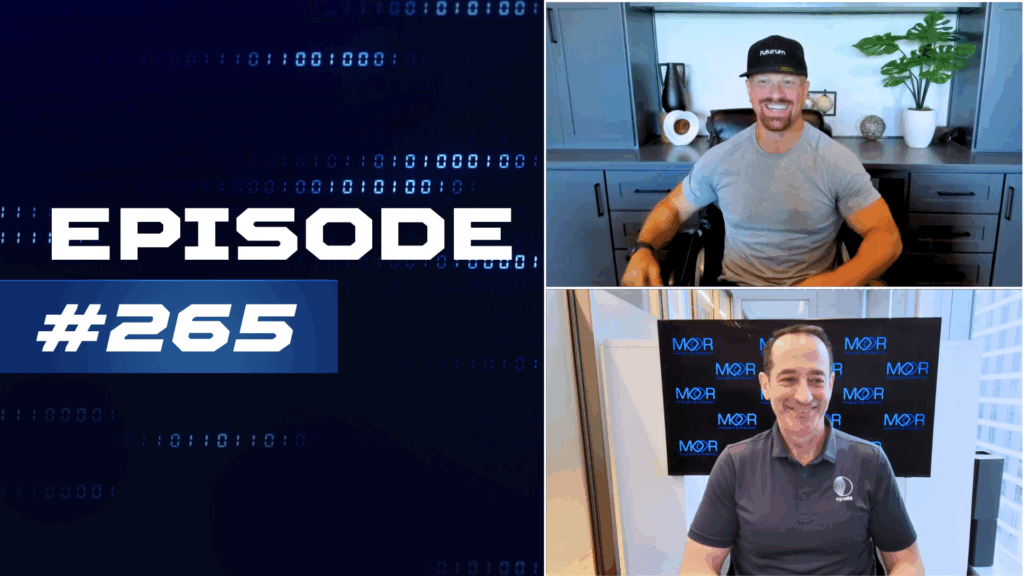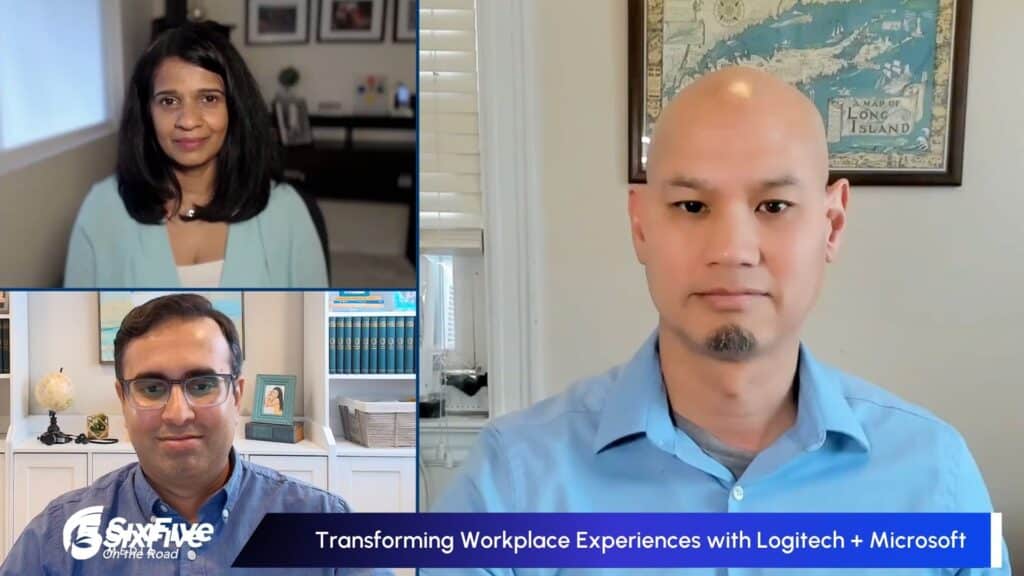In this episode of The 5G Factor, our series that focuses on all things 5G, the IoT, and the ecosystem as a whole, I’m joined by my colleague and fellow analyst, Todd R Weiss, for a look at the top 5G developments and what’s going on that caught our eye including the massive Ericsson AT&T $14 billion Open RAN deal and its implications for the North American and global 5G ecosystems, Nokia replacing Huawei as DT’s primary Open RAN supplier, and Germany’s 1&1 collaborating with Rakuten Symphony and Mavenir to operate Europe’s first fully virtualized 5G network based on Open RAN technology.
Our conversation focused on:
Ericsson AT&T $14B Deal Rockets Open RAN. Ericsson Open Radio Access Networks (RAN) hardware and services totaling about $14 billion are part of a massive new strategic agreement with AT&T to design the mobile carrier’s next 5G network of the future across the United States over the next five years. Under the agreement, Ericsson will help AT&T create an open programmable network that will enable AT&T to accelerate the commercial introduction of Open RAN equipment and network management that will ultimately lead to a cloud-native open network. We discuss why we anticipated that the top-tier operators, such as AT&T, were more likely to lean on their known and trusted RAN suppliers to make the initial foray and transition into Open RAN and not turn to new alternative RAN suppliers. The AT&T-Ericsson deal confirms this trend in the rapidly evolving Open RAN market.
Nokia Scores DT Open RAN Gig. Nokia and Deutsche Telekom AG (DT) announcing that they have begun to deploy a multi-vendor Open RAN network with Fujitsu in Germany. The technology is fully integrated into DT’s live commercial network and the initial cluster will provide 2G, 4G, and 5G commercial services to customers in the Neubrandenburg area of Northern Germany. The deal marks a significant return for Nokia to DT’s commercial network. We assess why the deal highlights the maturity and performance of Nokia’s O-RAN CU/DU and validates Nokia’s inroads with its anyRAN approach which offers mobile operators more choice in building 5G networks.
1&1 Enlists Rakuten Symphony and Mavenir for Open RAN Push. With “1&1 O-RAN”, the German mobile network provider 1&1 and its key partners Rakuten Symphony and Mavenir, assert operating Europe’s first fully virtualized 5G network based on the new Open RAN technology. After offering Fixed Wireless Access (FWA) since December 2022, mobile services (eMBB) are now also available. As such, 1&1 O-RAN is fully functional and available throughout Germany. We delve into 1&1’s unfolding Open RAN journey including its intention to cover 50% of the households in Germany by the end of 2030 as well as that by the end of 2024, 1&1 estimates it will have access to 3,000 sites.
Watch The 5G Factor show here:
Or listen to the full audio here:
If you’ve not yet subscribed to The 5G Factor, hit the ‘subscribe’ button while you’re there and you won’t miss an episode.
Disclosure: The Futurum Group is a research and advisory firm that engages or has engaged in research, analysis, and advisory services with many technology companies, including those mentioned in this article. The author does not hold any equity positions with any company mentioned in this article.
Analysis and opinions expressed herein are specific to the analyst individually and data and other information that might have been provided for validation, not those of The Futurum Group as a whole.
Transcript:
Ron Westfall: Hello and welcome everyone to The 5G Factor. I’m Ron Westfall, Research Director here at The Futurum Group. And I’m joined here today by my distinguished colleague, Todd R. Weiss, our team analyst who focuses on key areas such as communications networks, as well as 5G naturally. And today we’ll be honing in on the major 5G ecosystem developments that have caught our eye. So Todd, welcome back to The 5G Factor. Many thanks for coming on today. How have you been bearing up between episodes?
Todd R Weiss: I am good. Thanks again for having me. I love being here with you on The 5G Factor.
Ron Westfall: Well great. So with that, let’s dive right in. Apparently Ericsson has announced a new deal with an operator and in this instance-
Todd R Weiss: They certainly have.
Ron Westfall: Let’s focus on the AT&T deal. As we know they have many stakes in the fire. And so yeah, that has certainly been a momentous announcement. And basically Ericsson’s open RAN hardware and services are totaling about $14 billion. Are integral to this strategic new agreement with AT&T to design its next Gen 5G network of the future across the US over the next five years. So we can see-
Todd R Weiss: This is giant, as we’ve talked about before, this is really a big thing.
Ron Westfall: Yeah, no spin needed here. So I think everybody who pays attention to 5G knows about this deal certainly by now.
Todd R Weiss: Right.
Ron Westfall: And I think what we want to talk about are some of the key takeaways from us. And we’ll be revisiting this deal. We’ll do a New Year’s special.
Todd R Weiss: Oh, yeah.
Ron Westfall: So we’ll cover some of the initial bases in our conversation right now. And to lay the groundwork here, why is Ericsson conducting this deal? Why did AT&T select Ericsson? And I think first of all it’s important to note that Ericsson has been investing in its own facilities and capabilities, and that includes, for example, the expansion of its highly automated 5G smart factory in Louisville, Texas. And so this is definitely addressing the supply chain concerns that only AT&T has, but certainly the decision makers and the political field of the US. But this is not unique to the US, this is something that’s going on across the world.
And so as a result, Ericsson is producing in the US key strategic 5G and advanced antenna systems that are vital to how a 5G network can perform optimally, and certainly boost the network capacity. Also, the 5G Smart factory is helping secure Ericsson’s ability to address just that, the stability that is becoming increasingly required for winning major 5G deals, let alone mobile infrastructure engagements. So, we believe that this is a valuable lesson that all the builders out there, all the suppliers of 5G networks need to really be putting more emphasis on their supply chain arrangements to land such a tectonic deal as this one. And so with that as a very basic intro, Todd, from your perspective, what is also standing out about this momentous deal?
Todd R Weiss: Well, we were talking about this and we wrote a research brief about this. I wrote, this is groundbreaking. This is reimagining AT&T’s network completely from what they’ve got. They’re completely modernizing it, completely updating it, taking it to be open, using Open RAN, using off-the-shelf products, components off the shelf from manufacturers. This is designed to do for AT&T dramatic change and dramatic improvement. And make big use of AT&T’s network with Open RAN. I called it a tectonic shift. It really is a tectonic shift. This is a giant groundbreaking thing for them. It changes their network thinking, it changes their network direction, which we’ve already talked about. That’s hugely significant. And it’s gutsy of them too. It’s really taking a stand. And Open RAN’s been around for a while but it hasn’t been grabbed. They’re grabbing it and they’re running with it.
So the motivation for this shift is for them, for AT&T, it’s a big price performance gains that they expect by moving the network to new technologies and capabilities that will be better and cheaper and more efficient than their existing infrastructure. AT&T clearly identified Ericsson as the strategic partner, because by shifting… They identified Ericsson and they want to shift 70% of its network traffic into interoperable and open platforms. And they want to get this done, they want to start it in 2025. And by 2026 late in the year, they want to have 70% of their traffic moved over into this open capable platform. That’s pretty significant.
Ron Westfall: Well I agree. And I think also the deal confirms, we observed a few years back now at the advent of when Open RAN portfolio development was kicking in and the marketing was taking off, and the idea is okay, this will be a complete paradigm shift basically, in terms of how operators, including the established top-tier operators select their technology. So conceptually Open RAN, and it’s still applicable today, we’ll touch on this a little more, envisioned enabling the operators to combine multiple vendors across the network to diversify their supply sources, boost selection of best-of-breed components and basically avoid over-reliance on a single vendor, that is vendor lock-in.
And what we see with this deal is that what we anticipated is coming to fruition. And that is the top-tier operators at least are going to lean on their known and trusted RAN suppliers after they’ve kicked the Open RAN tires, in terms of it becoming more familiar with it and so forth. So yeah, we know that there’s been a lot of evangelizing out there by independent suppliers out there like Mavenir and Rakuten Symphony. And so they deserve credit for basically providing more awareness of how an Open RAN network can be implemented. The reality is, what I’m pointing to, is that this deal shows that an AT&T, when they’re ready for Open RAN will select as basically their lead integrator, a player like Ericsson, somebody who’s known and trusted and is already supplying two-thirds of their RAN equipment as it is.
And so this is confirmation of something that we called out a while back. And that’s not to deny that there’ll be other opportunities for the more, what you can call independent suppliers, but it’s just showing AT&T, this is the direction they’ll go in the nearest term, at least through 2025. Also, if my math is correct, DISH, which is the poster network for this Open RAN idea that the operator will be its own lead integrator that is. It started off performing its own lead integration duties combining over 10 vendors and just the network portion of its build. And that has produced mixed results so far, at least from my perspective. And I think most people agree with that.
And if my math is correct, DISH is using two radio hardware suppliers, Fujitsu and Samsung. And AT&T is also using two radio hardware suppliers, naturally Ericsson but also Fujitsu, which is gaining I think a lot of marketing credibility with just the AT&T deal, but also some other networks we’ll touch on in a bit. So for the Open RAN market segment, this is demonstrating it’s going to be something that will require some hand holding, at least in the beginning when it comes to an established incumbent operator. And so if we take a snapshot today, the operators overall can’t complain about the competitive mix even when you factor in the fact that Huawei and ZTE can’t be a supplier in many parts of the world today. So what we have now is Japan’s Fujitsu, NEC and Rakuten Symphony being key players in the Open RAN market. But also now Scandinavia’s Ericsson and Nokia and hopefully I’m not giving too much away by invoking Nokia. And also from the US, Parallel Wireless and Mavenir. So there’s really a wide array of choices now for the operators to pick and choose from, as they decide how to evolve, at least the Open RAN portion of their network, which ultimately can help to fill the goal of an open 5G network. That is further out from my view.
So with that, let’s now talk about Nokia. As we know, one outcome of the AT&T deal is that Ericsson basically is kicking out Nokia from the AT&T network on the RAN side. However, as we know, Nokia continues to have a strategic relationship with AT&T and other parts of the network and also what I touched on, AT&T indicatively revisiting how to evolve the Open RAN portion of the networks. So don’t be surprised if Nokia returns to that part of the network, in addition to what else they’re doing with AT&T, for example on the fiber side and so on. There’s just so many areas. But I think what is also interesting to note is well, well, well. Nokia, right after that announcement with Ericsson, AT&T announced that DT, Deutsche Telekom, is now working with them to deploy a multi vendor Open RAN network again with Fujitsu in Germany naturally. And Brandenburg, Germany is really the starting point in this case.
And in this case the technology is fully integrated into DT’s live commercial network and the initial cluster will provide 2G, 4G and 5G commercial services to customers at basically that part of northern Germany. The reason why I’m pointing that out, is that demonstrating the importance of backward compatibility, at least when it comes to again an incumbent network such as DT, let alone AT&T. And the deal marks a significant return for Nokia into DT’s commercial network. So right away we’re seeing, never say never. And that’s certainly what Nokia is demonstrating here, that they are definitely in this battle for the long term. They’re definitely going to be a player despite the short-term clip that they had to take with the AT&T and Ericsson announcement.
Todd R Weiss: Yeah. I was going to add there. It is not a shock at all when companies jump back and forth between having relationships or trying somebody else, whatever. This is, I think you get to the point where you just want to have a new party, you want to try a new approach. I don’t think it’s unusual in these things. That’s why mobile phone companies use different products and chips and things like that. There’s always a run on different chips and things like that. It’s basically best deals, best out there, best technologies. So it happens. So it’s not unusual. Like you say, they’ll all be back together again.
Ron Westfall: Right. Supply chain diversity, no vendor lock-in, these things are definitely being practiced as we look at the market, certainly in the last month of 2023. Now the announcement wasn’t too shocking and the fact that DT and Nokia had MoU back in Mobile World Congress at the beginning of the year basically. And also the announcement pointed out that Nokia is replacing the incumbent vendor, in this case Huawei. And I also want to emphasize this point, as we know when it comes to many key countries in the world, there has been a movement to basically not allow China-based vendors, in particular Huawei, but also ZTE, not to supply mobile network, at least strategically important components of it.
Todd R Weiss: Right. There’s been a lot of security concerns like crazy. All the governments are worried about this. And the United States is concerned about security and national security, all these things.
Ron Westfall: Yeah, exactly, Todd.
Todd R Weiss: It’s been ongoing for probably more than five, six years. It’s been a while.
Ron Westfall: Yes. And directly linked to the national security in my conversations is also a geopolitical factor. As you know when the first wave of countries started basically saying Huawei no more, that included the US, it included Australia. Germany wasn’t on board initially. They were basically saying hey, this is going to be hard, it’s rip and replace, it will cost billions of dollars. And that’s true. However, I think there’s been a shift in terms of not just Germany but other EU countries that have waited longer to do this kind of thing, because they’re disappointed in how China has performed in the Russia-Ukraine conflict. And so that I think has been an accelerant, if you will, in terms of let’s go ahead and do this strategy of replacing Huawei’s strategically important 5G network builds. So I think this is something that’ll be increasingly important, something that will quite simply play to not only Nokia’s advantage, but Ericsson’s advantage and the other suppliers we talked about that aren’t headquartered in China.
Also, to round this part out, Nokia will be deploying its commercial Open RAN energy efficient 5G AirScale Baseband solutions in DT’s network, including the Fujitsu radio units. But also, Nokia’s O-RAN solution will ensure that DT has the full feature service and performance superiority with again, classic purpose-built RAN. And as a result both companies have agreed to explore O-RAN technology in emerging areas such as cloud RAN, third party CAS, RIC naturally, SMO and naturally energy efficiency. As we know, sustainability is even more strategically part of the decision-making process in European operators today, although we anticipate they’ll also become even more the case in other parts of the world. And it already is for some operators, I think.
Todd R Weiss: And in another case of new partnerships can bring new innovation, fresh ideas, fresh blood, fresh technologies. I think these are really good things, that there is some exploration like that.
Ron Westfall: Yeah. And I think it also validates Nokia’s anyRAN approach. And Todd, from your view, what about this deal definitely brings out why Nokia’s anyRAN strategy is paying dividends?
Todd R Weiss: That’s a great point. This is another example of Nokia’s anyRAN approach, which aims to build future-ready radio access networks together with an ecosystem of industry partners to unlock collaborative advantage.
Ron Westfall: Right.
Todd R Weiss: Nokia anyRAN is designed to do just that, give mobile operators and enterprises more flexibility building their networks, which is critical. They need that kind of flexibility.For open Ran That’s why Open Ran is so beautiful for this. For Open Ran Nokia develops the required open front-haul features on top of its high-performance RAN software, which ensures coexistence and feature performance parity with purpose-built RAN. Nokia Baseband solutions can then be combined with both Nokia and third-party radios. For operators all over the place this ensures a smooth evolution path toward hybrid cloud RAN and O-RAN deployments. The deal I think does highlight the maturity and performance of Nokia’s O-RAN CU DU. It confirms Nokia’s inroads with its anyRAN approach, which offers mobile operators much more choice in building their 5G networks. I think this is really a big deal and another good thing.
Ron Westfall: Yeah, I think that’s very helpful, Todd. I think it crystallizes what I think where some overblown reactions to the Ericsson AT&T announcement, i.e., oh Nokia is getting kicked out. Now they’re going to be on the ropes. What is the future of this company? And I think this is definitely not something that’s going to happen, at least in the foreseeable future. Nokia is not going to be a candidate for say the M&A path. That is the inquiry.
Todd R Weiss: Nokia is not the next BlackBerry.
Ron Westfall: Well, right. I think that’s a fair assumption, let alone Nortel, et cetera. We can go on a history path here. But what I think is also an important takeaway, is that first of all, the deal bodes well for its overall prospects. Also, the T-Mobile network in the US, because as we know Deutsche Telekom and T-Mobile are very much under the same umbrella, at least in terms of how they coordinate their vision of a 5G network.
I think it’s also pointing out the fact that yes, Huawei rip and replace will be a reality more in Europe. And again this is going to be a positive outcome for the Nokias and Ericssons for that matter, in terms of how can they keep growing themselves in the highly competitive 5G market. And so with that, that’s actually continued on this Open RAN path naturally. But look at another network build, one that I think we’ve all been interested in. We talked about DISH, we talked about Rakuten, not Rakuten mobile but at least Rakuten Symphony. But here we’re again looking at Germany, and in this case, German operator 1&1 announced it is now operating what it’s claiming is Europe’s first fully virtualized 5G network based on Open RAN technology. That stands to reason they don’t have a legacy network to deal with. So they can make that claim and I think it has credence. And I think what’s also important to note, is that 1&1 has been offering FWA services. We did that topic on our previous webcast.
Todd R Weiss: Yes we did.
Ron Westfall: And it’s been doing that for over a year now. And now it’s ready for primetime mobile services using naturally compatible smartphones. And where 1&1 networks doesn’t provide coverage directly today, the phones will then automatically roam on the Telefonica network. And beginning in the summer of 2024 will also roam on the Vodafone network. So this is good news for consumers in Germany and Europe, for that matter.
And also, I think it’s important to note that the handoffs will be uninterrupted. But also that 1&1 is using only gigabit in antennas, and as a result it can always connect their customers or subscribers through optical fiber. And so basically you can have confidence. If you’re really looking for a new competitive alternative, 1&1 has done its homework and is coming out with what I think is really the network of the future overall, that is a truly open 5G network in terms of design and implementation. But I’ll stop on that note. Todd, from your view, what about the 1&1 deployment stands out for you?
Todd R Weiss: Yeah, I agree with you. I think this is again another interesting deal. I think that basically Rakuten Symphony is responsible for the end-to-end integration of the network. Everybody’s got a piece of this thing. The cloud native core is going to be provided by Mavenir. And at the heart of the network by 1&1 is a private cloud operated in 100s of cities through decentralized edge data centers according to 1&1, which is a really good way to put this together.
Network functions will be controlled by software running on conventional servers. Again, reducing costs, speeding up the deployments, things like that. Nothing super custom. And linking back to the Ericsson AT&T deal, the operator is using Ericsson as its Open RAN partners. So here’s Ericsson again in this thing, with plans calling for 70% of AT&T’s wireless network moving across open capable platforms by late 2025, as we discussed before. So this is again a big deal and runs parallel. There’s a bunch of companies doing similar sorts of things, trying to bring Open RAN into reality in their networks.
Ron Westfall: No, I think you had an excellent point there about what DISH is doing and also 1&1. So this is something that I think has been capturing the imagination and okay, things haven’t taken off as quickly as initially anticipated. However, we’re seeing that this is something that can be done in terms of getting actual subscribers onto the network.
And 1&1’s case, there are more than 80 companies that are providing products and services to them. And so that I think is demonstrating that, okay, supplier flexibility is definitely integral to the Open RAN vision, let alone the open five-G network builds that are evolving very rapidly. And to your point, Todd, about 1&1, is also doing in terms of objectives, it’s planning to cover 50% of the households in Germany by the end of 2030. So this is something we will definitely be revisiting. And also by the end of 2024 it estimates we’ll have access to 3000 sites. So this is definitely a journey, something that I think will be a difference maker in the German market, but also serve as an encouragement, a template, for how DISH and Rakuten and others who are now embarking on the Open RAN journey can get some valuable insights, gain some lessons learned. And I think we covered a whole lot. And so definitely we’ll have a sequel to this very soon and hopefully our-
Todd R Weiss: Open RAN is not going away, open RAN is arriving. We’ll be talking a lot more about it I’d say over the next few years.
Ron Westfall: Well yeah, years, let alone say within the next couple of weeks and months.
Todd R Weiss: Well yeah, at some point Open RAN like everything else will become a commodity. Right now it’s new, it’s exciting, it’s showing us the potential for changing things, making things better. It’s growing. I think that’s a really interesting thing as you watch technologies morph into new technologies and new ways of doing things. And it’s an exciting time to be watching Open RAN right now. So we’re very lucky to be able to check this out and talk about it.
Ron Westfall: Oh yeah, I agree wholeheartedly. And I was noting that hopefully our next Open RAN sequel will more parallel The Godfather part II than say The Exorcist II, in terms of value to the viewers out there. And with that, thank you everyone for tuning in and joining our show. Again, thank you Todd for coming in and sharing your insights on Open RAN.
Todd R Weiss: Thanks for having me. I really love doing these with you. That was another fun episode.
Ron Westfall: Excellent. And so be sure to again, reserve The Futurum Group tab, in terms of being able to quickly view or listen to The 5G Factor webcast. And with that, everyone have a great 5G day.
Todd R Weiss: See you next time.
Other insights from The Futurum Group:
Ericsson Open RAN Gear to Power AT&T’s Coming US 5G Open RAN Network
Ericsson Brightens 5G SA Use Case Prospects with New Software Toolkit
Nokia Dual-Band Massive MIMO Is Key to 5G Performance & Energy Gains
Author Information
Ron is an experienced, customer-focused research expert and analyst, with over 20 years of experience in the digital and IT transformation markets, working with businesses to drive consistent revenue and sales growth.
He is a recognized authority at tracking the evolution of and identifying the key disruptive trends within the service enablement ecosystem, including a wide range of topics across software and services, infrastructure, 5G communications, Internet of Things (IoT), Artificial Intelligence (AI), analytics, security, cloud computing, revenue management, and regulatory issues.
Prior to his work with The Futurum Group, Ron worked with GlobalData Technology creating syndicated and custom research across a wide variety of technical fields. His work with Current Analysis focused on the broadband and service provider infrastructure markets.
Ron holds a Master of Arts in Public Policy from University of Nevada — Las Vegas and a Bachelor of Arts in political science/government from William and Mary.






